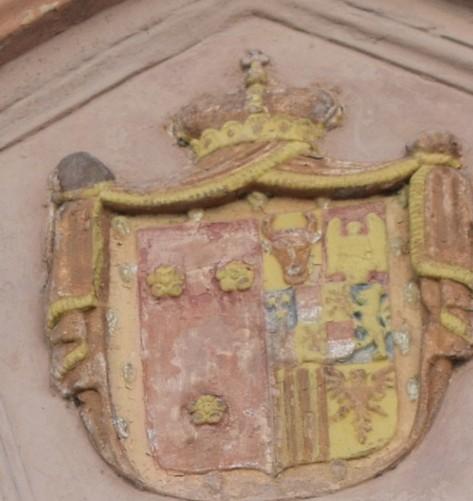Exhibition of the Geschichtsforum Schleiden: "Die mit dem Adel der Geburt den Adel der Gesinnung stets vereinigten"
back to the overview
Exhibition of the Geschichtsforum Schleiden: "Die mit dem Adel der Geburt den Adel der Gesinnung stets vereinigten" - “The ones who always combined the nobility by birth with the nobility of attitude”
This assessment made by the (Catholic) priest Carl Wilhelm Peters in 1914 refers to the activities of the House of Arenberg in Schleiden. Even if one considers this quote to be an overly positive formulation, one cannot fail to appreciate the achievements of the Arenbergs in Schleiden and its surroundings.
The exhibition will document this:
1773 to 2023: 250 years of Arenberg in Schleiden
in the town hall
Opening on 11 April at 6.30 pm
Dr Norbert Toporowsky, supported by his colleagues from the Geschichtsforum Schleiden (the local history forum), has put together a large number of exhibits that show the achievements of the Dukes of Arenberg (and especially their wives) for Schleiden.
The exhibition not only includes the history of this aristocratic house, but also that of the town: the Protestant church, the Rentei (forest management house) and the hospital, to name just three particularly striking examples, can be traced back to the actions of the Arenbergs. The fact that Schleiden became a district town, that a fortified bridge over the river Olef at the foot of the Ruppenberg saved the walk through the ford for the first time, that the windows of the Catholic church were saved from decay - all this was the work of the Arenbergs
In addition to the illustrations of the regents, the exhibition uses several maps drawn by Arenberg surveyors and other cartographers to illustrate the extent of the Arenberg possessions in the area.
Plans of the castle mill, the coal sheds and iron hammers in Wiesgen from the 19th century prove how much the Dukes also took care of the little things, even though they themselves did not visit the smallest district town in the Rhineland very often. It may therefore come as a surprise that Duke Prosper Ludwig considered settling permanently in Schleiden. The plans to rebuild the castle that arose on this occasion are of course also included in the exhibition, even though they were never realised. Another family should also be mentioned in this context: the Poensgen family, who went from being partners to competitors of the Arenbergs. The achievements of the Arenberg family in the reforestation of the Eifel forests occupy a special place, as this topic leads on to the major sphere of activity of the Arenberg-Schleiden GmbH and the forester's house in the Arenbergtraße.
And even though the Dukes largely withdrew to Belgium after 1860, their visits to the Eifel were always the subject of lavish reports in the local newspaper, and it is generally less well known that a grandson of the aforementioned Duke Prosper Ludwig represented the interests of the Schleiden district there as a member of the Prussian House of Representatives around 1900. The history of the Arenbergs in Schleiden did not end with the sale of the castle to the Order of the Lazarists in 1920 and the traces of their presence can still be recognized today.
250 years of the Arenbergs in Schleiden - 250 years of Schleiden in the light of the Arenbergs


Flyer

